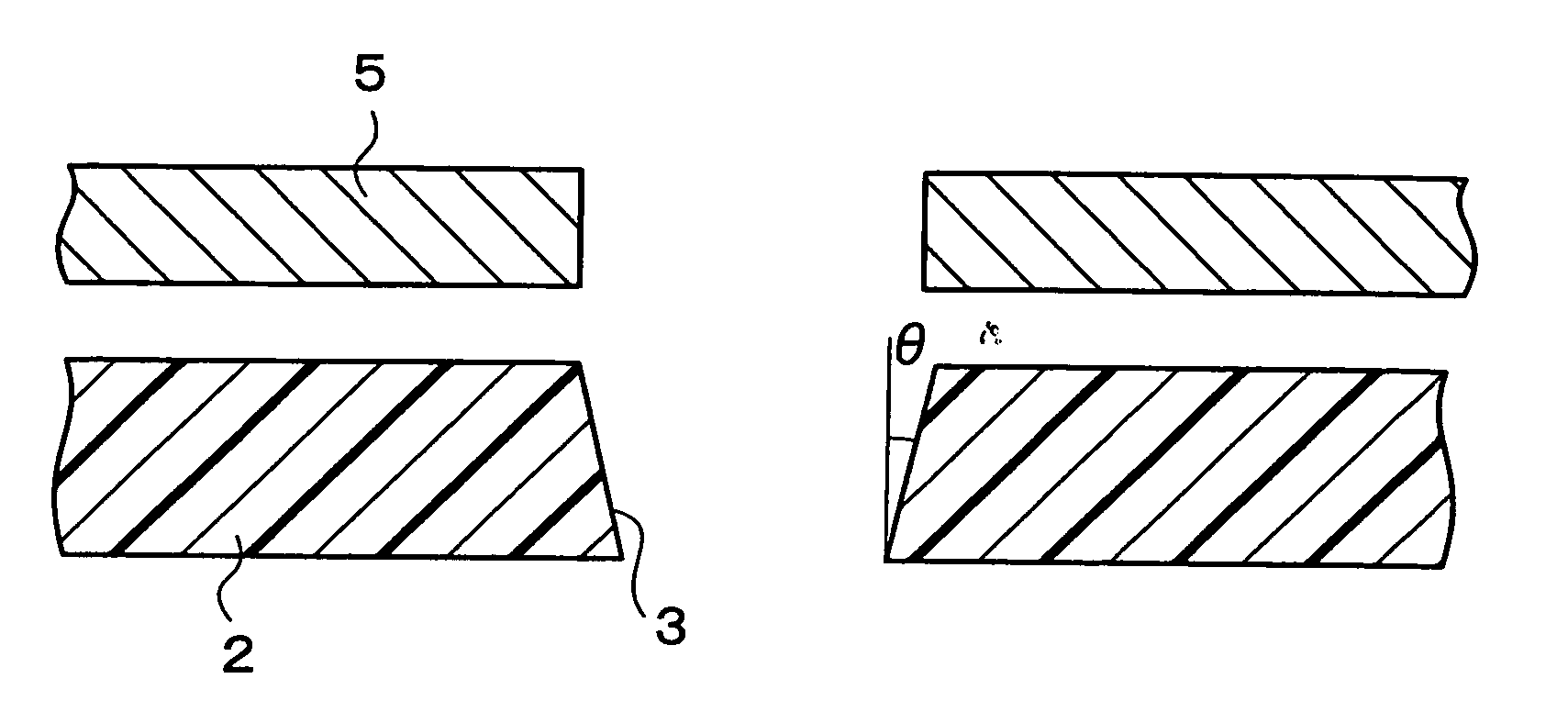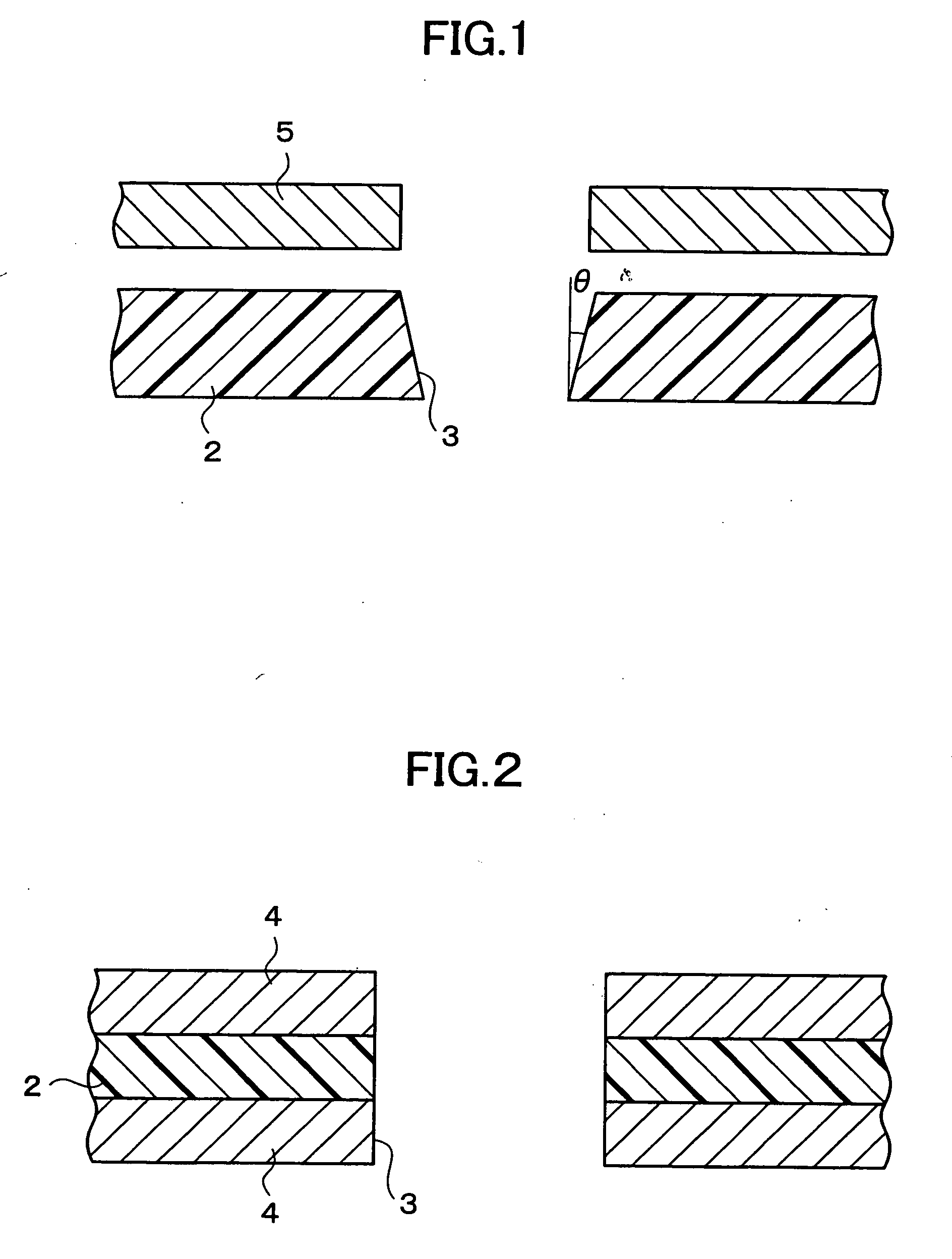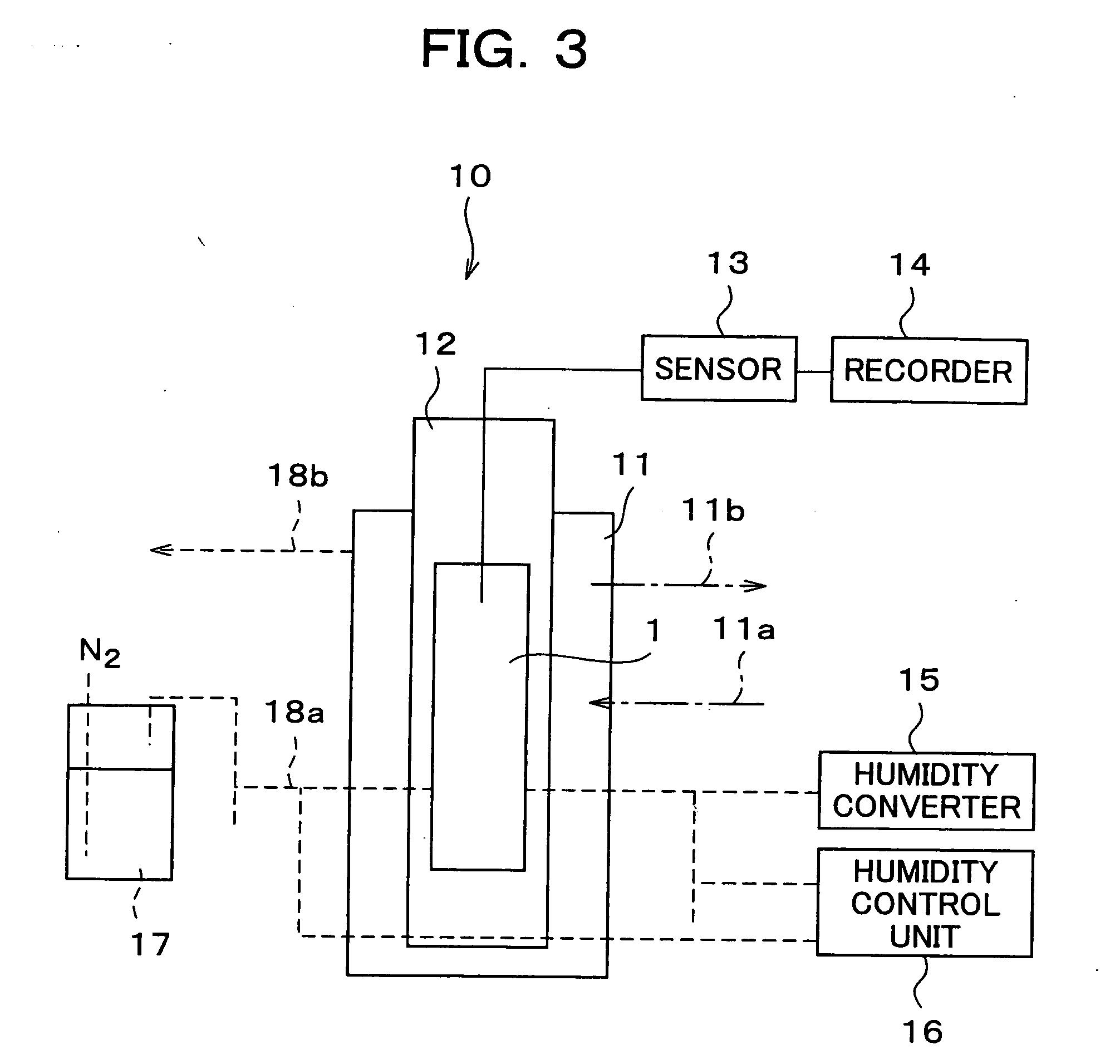Wiring board, process for producing the same polyimide film for use in the wiring board, and etchant for use in the process
a technology of polyimide film and wiring board, which is applied in the field of wiring board, can solve the problems of inability to form the fine via hole, the current mechanical drilling hits a technical limit, and the fabrication profile is more serious, and achieves the effect of efficient drilling
- Summary
- Abstract
- Description
- Claims
- Application Information
AI Technical Summary
Benefits of technology
Problems solved by technology
Method used
Image
Examples
example 1
[0219] The polyimide film obtained by polyimide preparation method example 1 was attached onto a aluminum board using polyimide tape, so that it would constitute an organic insulating layer. Thereafter, a thin chromium film layer (first metal layer) and a thin copper film layer (second metal layer) were concurrently vapor deposited on the polyimide layer, using a sputtering device (sputtering system manufactured by Shimadzu Corporation; product name HSM-720). A metal layer which was made up of the chromium layer and the copper layer was thus formed on one surface of the aluminum board.
[0220] In the sputtering, argon as a sputtering ion source was introduced into a chamber. The chromium layer was vapor deposited at 1×10−2 Torr, 0.2 A, for 90 seconds; the obtained chromium layer was about 500 Å thick. As the vapor deposition for copper, conditions were 5×10−3 Torr, 0.5 A, and 60 minutes; the obtained copper layer was about 7 μm thick.
[0221] Thereafter, the aluminum board was turned ...
example 3
[0237] Wiring board (3) of the present invention was prepared in the same manner as in example 2 above, except that the polyimide film was subjected to atmospheric pressure plasma processing before stacked on a surface of the aluminum board. Wiring board (3) was inspected to measure the taper angle and the hole edge profile deformation and to count the number of holes having developed an edge profile deformation; results are listed in table 1 in columns (I), (III), and (IV) respectively.
example 4
[0239] Wiring board (4) of the present invention was prepared in the same manner as in example 3 above, except that the etchant used was a water solution prepared to provide a mixture ratio in weight, (potassium hydroxide) (water): (ethanol): (2-ethanolamine)=1:1.6:0.4:1. Wiring board (4) was inspected to measure the taper angle and the hole edge profile deformation and to count the number of holes having developed an edge profile deformation; results are listed in table 1 in columns (I), (III), and (IV) respectively.
PUM
| Property | Measurement | Unit |
|---|---|---|
| taper angle | aaaaa | aaaaa |
| taper angle | aaaaa | aaaaa |
| diameter | aaaaa | aaaaa |
Abstract
Description
Claims
Application Information
 Login to View More
Login to View More - R&D
- Intellectual Property
- Life Sciences
- Materials
- Tech Scout
- Unparalleled Data Quality
- Higher Quality Content
- 60% Fewer Hallucinations
Browse by: Latest US Patents, China's latest patents, Technical Efficacy Thesaurus, Application Domain, Technology Topic, Popular Technical Reports.
© 2025 PatSnap. All rights reserved.Legal|Privacy policy|Modern Slavery Act Transparency Statement|Sitemap|About US| Contact US: help@patsnap.com



